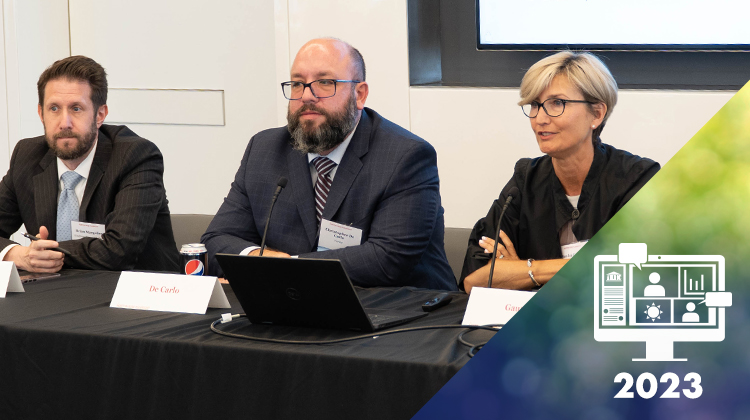Christopher De Carlo, Senior Technical Advisor, Environmental Insurance and Sandra Gaurin, Vice President – Client Services & Technical Support of the VERTEX Companies, LLC participated in a panel with Brian Margolies of Kaufman Borgeest & Ryan LLP to discuss legacy claims associated with produced water during the July 20, 2023 AIRROC Summer Membership Meeting. A video replay of this presentation is available in the AIRROC On Demand library.
After discussing how produced water originates as a by-product of petroleum and natural gas production, the panel discussed how the handling and disposal of produced water can result in an environmental issue that can lead to a legacy insurance claim being made. This is due to the extremely high salinity (over 10 times that of seawater); the presence of dissolved phase petroleum related compounds; the presence of metals; and/or low-level radioactivity. These factors make produced water hazardous to human and environmental health. As a result, the current regulations require that the produced water be treated or disposed of in accordance with federal and state laws.
Due to the high cost of treatment, the most common disposal method for produced water is to utilize an injection well that sequesters the produced water deep in the earth’s crust. This disposal method requires that the produced water be transported from the petroleum/natural gas production well to the disposal site where it is stored and treated prior to injecting the produced water into the selected geological formation. Causes of releases into the environment include transportation releases associated with failed pipelines and vehicular accidents; failure of storage tanks and injection equipment; and natural disasters. Each of these types of failures has the potential to impact the environment and may not be reported by well operators. The failure to report occurs due to injection well sites which are typically in remote areas; smaller release can go unnoticed over time; workers may not report releases in accordance with regulations due to fear of reprisal from their bosses; or due to a release occurring in an isolated or hard to access area along a pipeline (i.e. underground or in a remote section of pipeline).
Situation can occur where a historical release is identified due to unrelated circumstances such as a regulatory inspection or the historical release is discovered during the mitigation of a recent release of produced water. This leads into issues dating when a historical release may have occurred or who may be responsible for that component. This is further complicated by how oil and gas leases are handled throughout the oil and natural gas industry. Extraction and disposal wells are typically on land that is not owned by the operators and the use of the land to either extract petroleum or dispose of produced water is obtained to a lease. Many times, these leases are reassigned to new operators throughout the history of the well who each have insurance policies based on their operating life, which is often several decades (especially if a production well is converted into a disposal well).
Also, since the insurance industry and petroleum industry has been around for over 100 years, there have been many specialty insurance products that may insure different aspects of the release. There may be a policy that covers surface releases and another policy that covers subsurface releases. There can be a policy that covers a pipeline release and releases from storage tanks. Since the date of release is difficult to identify on many legacy claims and there can be several policies that can be implicated, extra thought needs to be taken into identifying how to appropriately allocate costs between operators when a legacy produced water claim is levied to a policy.
